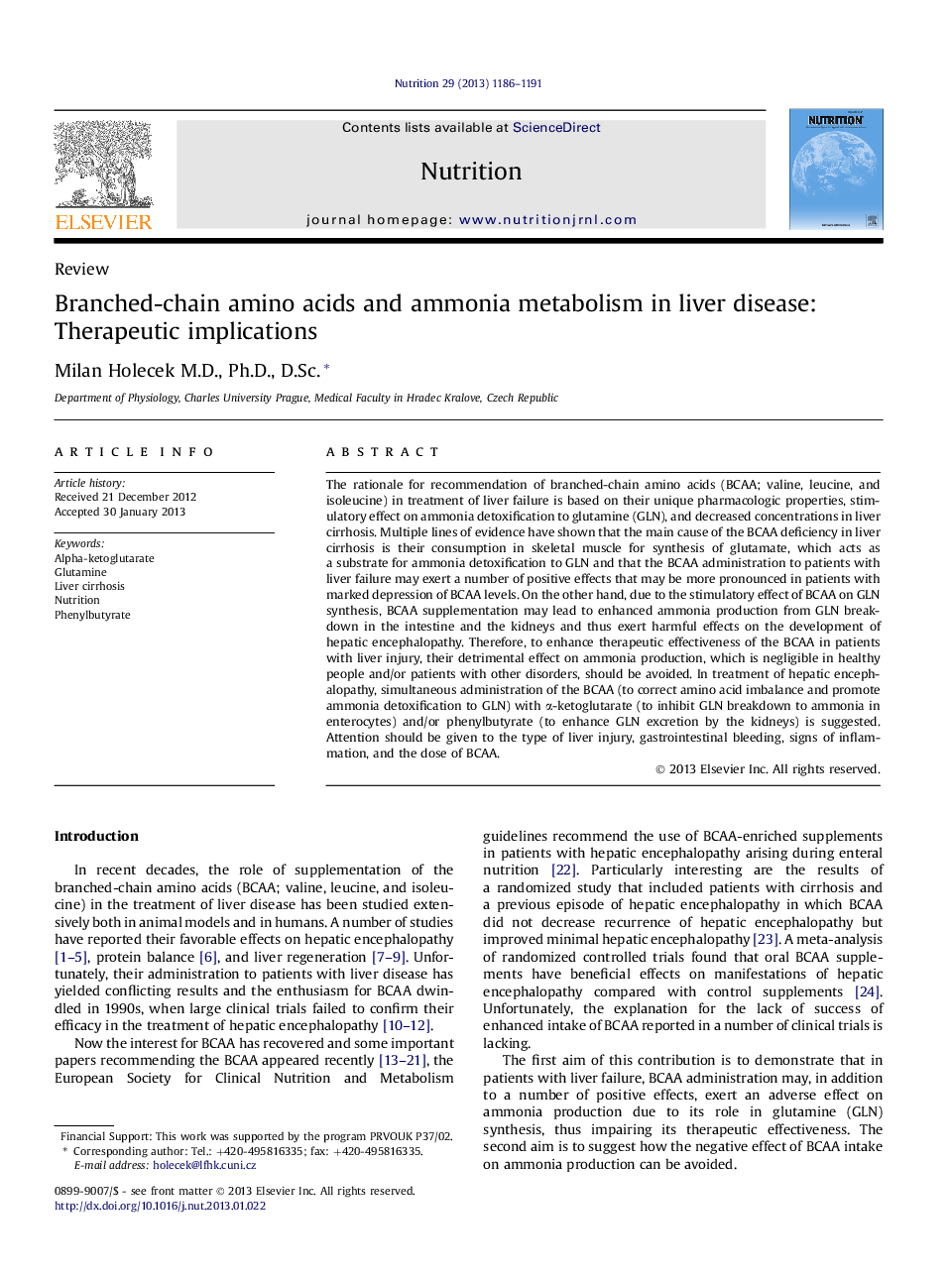| Article ID | Journal | Published Year | Pages | File Type |
|---|---|---|---|---|
| 3276409 | Nutrition | 2013 | 6 Pages |
The rationale for recommendation of branched-chain amino acids (BCAA; valine, leucine, and isoleucine) in treatment of liver failure is based on their unique pharmacologic properties, stimulatory effect on ammonia detoxification to glutamine (GLN), and decreased concentrations in liver cirrhosis. Multiple lines of evidence have shown that the main cause of the BCAA deficiency in liver cirrhosis is their consumption in skeletal muscle for synthesis of glutamate, which acts as a substrate for ammonia detoxification to GLN and that the BCAA administration to patients with liver failure may exert a number of positive effects that may be more pronounced in patients with marked depression of BCAA levels. On the other hand, due to the stimulatory effect of BCAA on GLN synthesis, BCAA supplementation may lead to enhanced ammonia production from GLN breakdown in the intestine and the kidneys and thus exert harmful effects on the development of hepatic encephalopathy. Therefore, to enhance therapeutic effectiveness of the BCAA in patients with liver injury, their detrimental effect on ammonia production, which is negligible in healthy people and/or patients with other disorders, should be avoided. In treatment of hepatic encephalopathy, simultaneous administration of the BCAA (to correct amino acid imbalance and promote ammonia detoxification to GLN) with α-ketoglutarate (to inhibit GLN breakdown to ammonia in enterocytes) and/or phenylbutyrate (to enhance GLN excretion by the kidneys) is suggested. Attention should be given to the type of liver injury, gastrointestinal bleeding, signs of inflammation, and the dose of BCAA.
